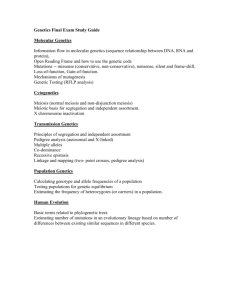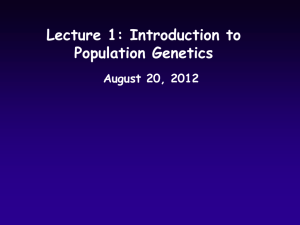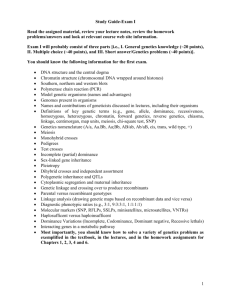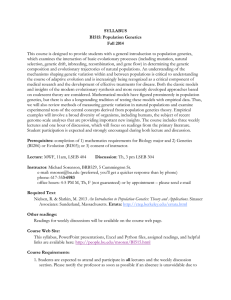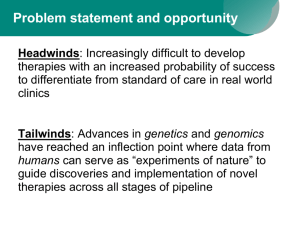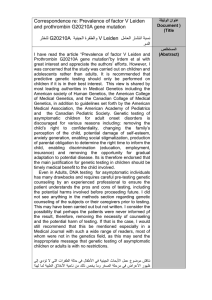GLYPHOSATE RESISTANCE Background / Problem
advertisement
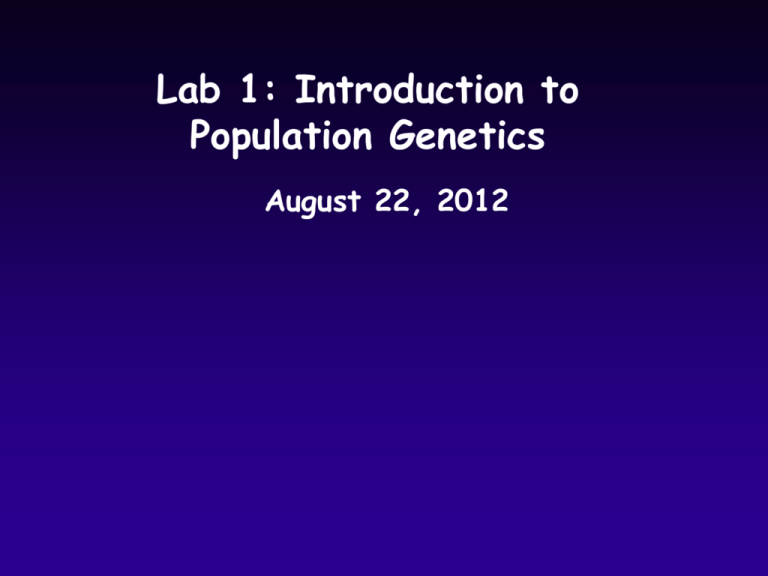
Lab 1: Introduction to Population Genetics August 22, 2012 Instructors Steve DiFazio 5200 Life Sciences Building Office Hours: Mon, Wed, Thurs 1 to 2 pm Hari Chhetri (TA) 5206 Life Sciences Building Office Hours: Tue, Wed, Fri 11:30 to 12:30 Please use office hours, or make appointment! Required Lab Manual Slavov, G, E. RodgersMelnick, and S.P. DiFazio. 2012. BIOL 464/GEN 535 Population Genetics Laboratory Manual. WVU Press. 107 Pages. Available only from WVU book store (~$20) Please purchase by this Wednesday, August 22 Lab Reports Lab reports due at beginning of lab period 12 total, worth 10 points each Deduct 0.5 points for each day late Last report is optional: up to 10 pts extra credit Guidelines for lab report are in lab manual Email and/or paper versions are fine Most weeks require a write-up with interpretations for each calculation or simulation Please be careful to fully answer questions, including explanations of results from biological standpoint Working Together and Academic Honesty Group work in laboratory is optional but encouraged It is fine to discuss lab problems and work on them together HOWEVER, your lab report must be your original work See academic honesty policy on class website Exams are based primarily on the lab exercises and examples worked in class Highlights from the Schedule Introduction to Probability Genetic variation in populations: Hardy-Weinberg Equilibrium Selection Inbreeding Genetic drift Gene Flow and population structure Phylogenetics Genetic identity and forensic identification Coalescence and neutral theory Linkage disequilibrium Quantitative genetics Tying genotypes to phenotypes Population Genetics is Important Disease susceptibility, genetic testing, and personalized medicine Statistical interpretation of forensic DNA evidence Human evolution and cultural history Crop and animal improvement Traditional breeding Genetic engineering Conservation plans for plant and animal communities Responses of plant and animal communities to climate change Introductions Name Major Career goal/goal for class. Be honest! Mathematical Tools for Population Genetics Basic algebra 1 1 fe 4Ne 1 1 Basic calculus Basic statistics Probability m P Pk k 1 PIDsibk He 1 1 1 4 2 2 2 (1 pi ) [ pi ( pi ) ] 4 2 i i i Population Genetics and Probability Probability is at the core of much of population genetics Reproduction is a sampling process Effects of mutation, gene flow, selection, and genetic drift must be seen as departures from expectations based on random processes Example: 1 genetic locus and two alleles in a forest of 20 trees determines color of foliage. Green is dominant. What proportion of offspring will have white foliage? : 4 copies : 36 copies


